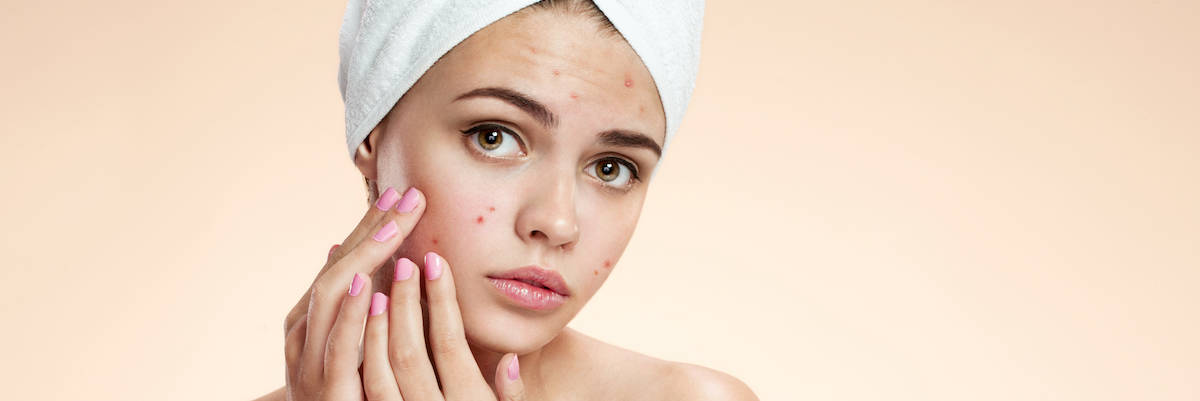
At some point in our lives we have all been haunted with the dreaded four-letter word: ACNE. There are many different types of acne and the causes vary just as much as the treatments do. The most common type of acne are whiteheads, blackheads, pustules (aka pimples), papules, cysts, and nodules.
Acne is caused by a variety of reasons but mainly it boils down to hormone levels and genetics, but there are many factors that can cause flare ups to be worse than others. When puberty kickstarts your hormones, levels fluctuate therefore causing your teenage years to be haunted by acne. When your hormone levels rise, your skin starts producing more sebum, which causes oily skin which in turn leads to acne breakouts. Women will also experience hormone level changes during pregnancy and menopause. Another leading factor in the acne game is genetics. If your parents had acne, chances are, you’re going to as well, so dig out those photo albums and yearbooks and take a peek! Stress can also play a leading role in your skin condition. When you’re stressed, your body goes into overdrive and produces more cortisol and androgens- and when these hormones increase, your skin secretes more oil, causing even more breakouts.
Blackheads are caused by your pores staying open, which exposes the sebum in your pores to air. When sebum is exposed to air it hardens and turns a black, brown, or even grayish color. Blackheads are typically located on your face, forehead, chin, and nose, but can also be found on your chest back and arms.
Whiteheads are sebum and dead skin cells that have accumulated in a pore that is not open forming essentially a plug. These are not usually infected, but bacteria can affect the surrounding pore. As tempting as it is to pop whiteheads, don’t. It causes more harm than good and can introduce bacteria to your skin, which will cause your skin to get red and infected.
Papules are typically red and painful type of acne that contain pus. Pustules are the most common types of acne. This type of acne is characterized by white or yellow pus-filled lesions. The big difference between papules and pustules is that pustules can contain white blood cells.
Cysts are the hardest type of acne to treat. This type of acne does not actually form a head and is deep below the skin tissue. This type of acne is extremely tender and painful. Nodules can be seen in extreme acne cases. These are similar to papules but are rooted deeper into the skin tissue. These types of acne can leave scarring on the skin and often require antibiotic treatments.
For all acne breakouts, we recommend you practice good skin health which includes washing your face daily and not picking at your skin. You can also try over-the-counter spot treatments that have salicylic acid or benzoyl peroxide. If these spot treatments do not work, please call our office to set up a consultation to find a treatment plan best for you.
Disclaimer: This blog provides general information and discussion about medical, cosmetic, mohs, and surgical dermatology. The words and other content provided in this blog, and in any linked materials, are not intended and should not be construed as medical advice. If the reader or any other person has a medical concern, he or she should consult with an appropriately-licensed dermatologist or other health care worker.
